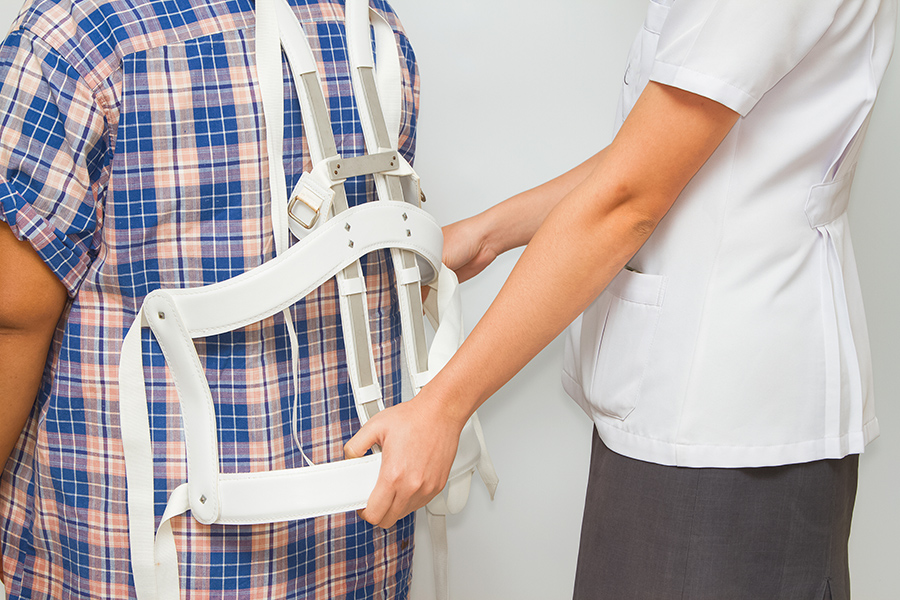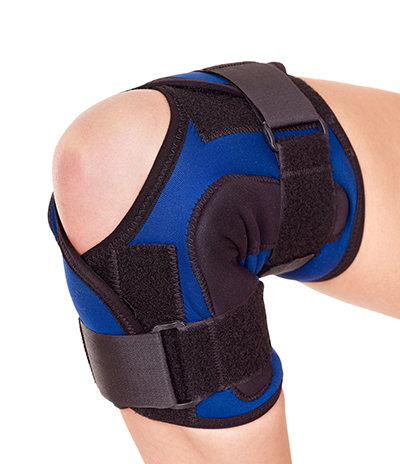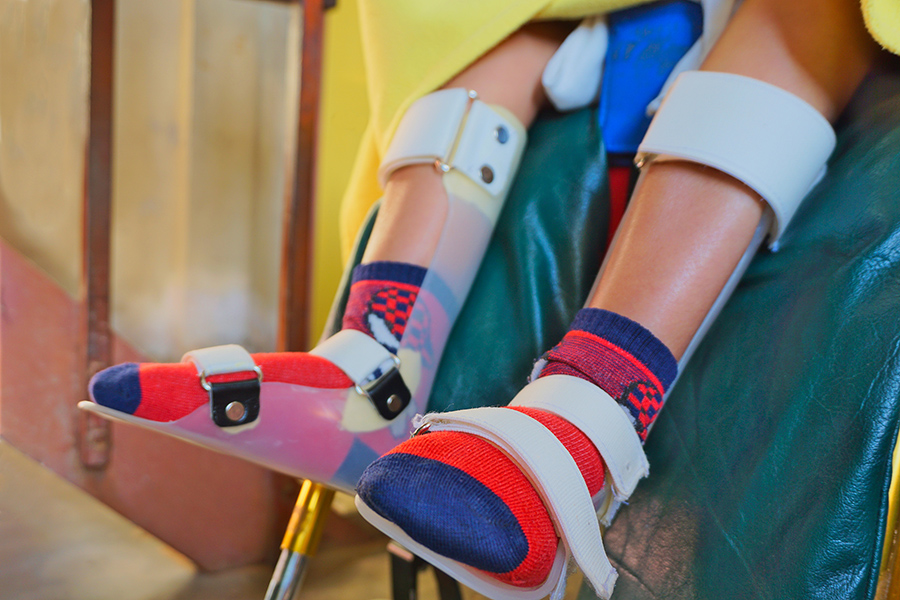Last Updated on 05/12/2023 by Sarah Sarsby
Orthoses are medical devices that are applied externally to the body for therapeutic effect. Orthoses are designed to alter the biomechanics of the human body. They may be used to redistribute pressures acting on the body, offload or immobilise painful joints, improve stability, optimise body alignment, and improve walking patterns.
Examples of orthoses include footwear, inlays, simple insoles, bespoke devices, braces, splints, supports, and callipers. Orthoses can be prescribed for all parts of the body, from the head to the toes.

There are many types of patients who may benefit from an orthotic device, these include people with:
If you would like to know if an orthosis can help you, it is always best to speak with your GP or healthcare professional.

The goals of treatment will be different for each person who uses an orthotic device.
For some, an orthosis will enable them to carry out their daily activities with less pain, helping them to maximise their lifestyle. Others will use an orthosis to help improve their mobility and undertake tasks that would otherwise be a challenge or unachievable.
Surgeries carry risks, and not every person may be a candidate for an operation. Orthoses are routinely used as an alternative to surgery or as a tool to help a person until they are fit and well for an operation. Post-surgical rehabilitation and recuperation timescales can be lengthy and therefore using an orthosis can help a person postpone or delay surgery until a convenient period in their life.
Orthoses are often used in wound prevention, particularly for those identified at high risk of tissue breakdown. Use of an orthosis in this manner may allow a person to maintain their current lifestyle with confidence, given the knowledge that their body is being protected.
To find out which type of device will work best, a thorough biomechanical assessment is advised. This can be provided by an orthotist who is a healthcare professional qualified to assess, prescribe, and supply orthoses.
For many, a simple ‘off the shelf’ or ‘over the counter’ device may be sufficient to help them manage their condition. For those with more serious, complex, or critical health conditions, provision of a tailored or fully bespoke orthosis may be in their best interests. This will be decided between you and the orthotist.
Orthotists are allied health professionals (AHPs) who assess for, prescribe, and fit orthoses. They are HCPC registered and regulated. The status of an orthotist can be checked via the HCPC website.
Orthotists complete in-depth university teaching to ensure expert knowledge of the body: its anatomy, function, and pathology. Training develops skills in biomechanics, material science, engineering design, and workshop craft.
Orthotists are uniquely placed to offer the best services to those who may require an orthosis. Whilst there are many orthotic specific services, orthotists are increasingly integrating with their healthcare colleagues to provide joined up services.
Orthotists can work in both the NHS and independent service sectors.

An orthotic consultation should start with a discussion about your medical history and current health conditions that you would like the orthotist to help manage. Your aims and goals of treatment should always be considered.
With your consent, a physical assessment will be undertaken, and the orthotist will explain their findings. For some health conditions, the orthotist may advise that further tests or imaging are required to learn more about your alignment. If your health condition affects your walking, it is normal for the orthotists to observe your gait (walking pattern) to examine how this can be made more efficient or more comfortable.
It is always useful to bring with you any orthoses that have been prescribed in the past. This will help the orthotist to see what has or hasn’t been successful.
After assessment, the orthotist will formulate an orthotic prescription. This is a design blueprint that details the specifications for the device that you will require. At all times, the orthotist will consult with you to consider your preference, if there are different styles available or aesthetic options.
Once a prescription is agreed, the orthotist will take measurements required to allow manufacture of your orthosis. Sometimes a foam impression box, 3D scans, moulds, or plaster casts of the body may be required to ensure a bespoke fitting orthosis can be made.
The orthotist will arrange a treatment cycle including fitting and tailoring sessions, supply appointments, and a review format. When you are supplied your device, you should be given full instructions as to how to use and care for the orthosis as well as on how to adapt to the correction level.

Referral routes to NHS services will vary on a local level. Typically, this will be via your GP, consultant, or healthcare therapist. In some regions, you may be able to self-refer to your orthotics service.
Many NHS services are contracted out to independent orthotic service providers, many of whom are BHTA members.

You can also arrange to see an orthotist privately. Private treatment may be an option for a person who requires additional devices to that provided by their local NHS service, expedited supply of an orthosis, a specialist orthosis for sporting or vocational use, and secondary consulting opinions.
All expected consultation fees and anticipated product fees should be outlined to you at the time that you book a private consultation.
When buying orthoses privately for your own personal use you may not have to pay VAT. Where this is the case, your provider will ask you to complete a VAT relief claim form and will then deduct the VAT.
Ensuring that the manufacturer of your orthosis and/or the provider of your orthotic service are BHTA members is important for several reasons. BHTA members subscribe to a Code of Practice that is designed to protect the consumer and encourage higher standards than those simply outlined by law. Should you be in the unfortunate position that you require to make a complaint, BHTA members are signed up to an impartial complaints and mediation service.
A list of BHTA members is available on the BHTA website here. Search for orthotics to find manufacturers and suppliers.

The British Association of Prosthetists and Orthotists (BAPO)
www.bapo.com
The Health and Care Professions Council (HCPC)
www.hcpc-uk.org
The International Society of Prosthetists and Orthotists (ISPO)
www.ispoint.org
NHS Choices
www.nhs.uk